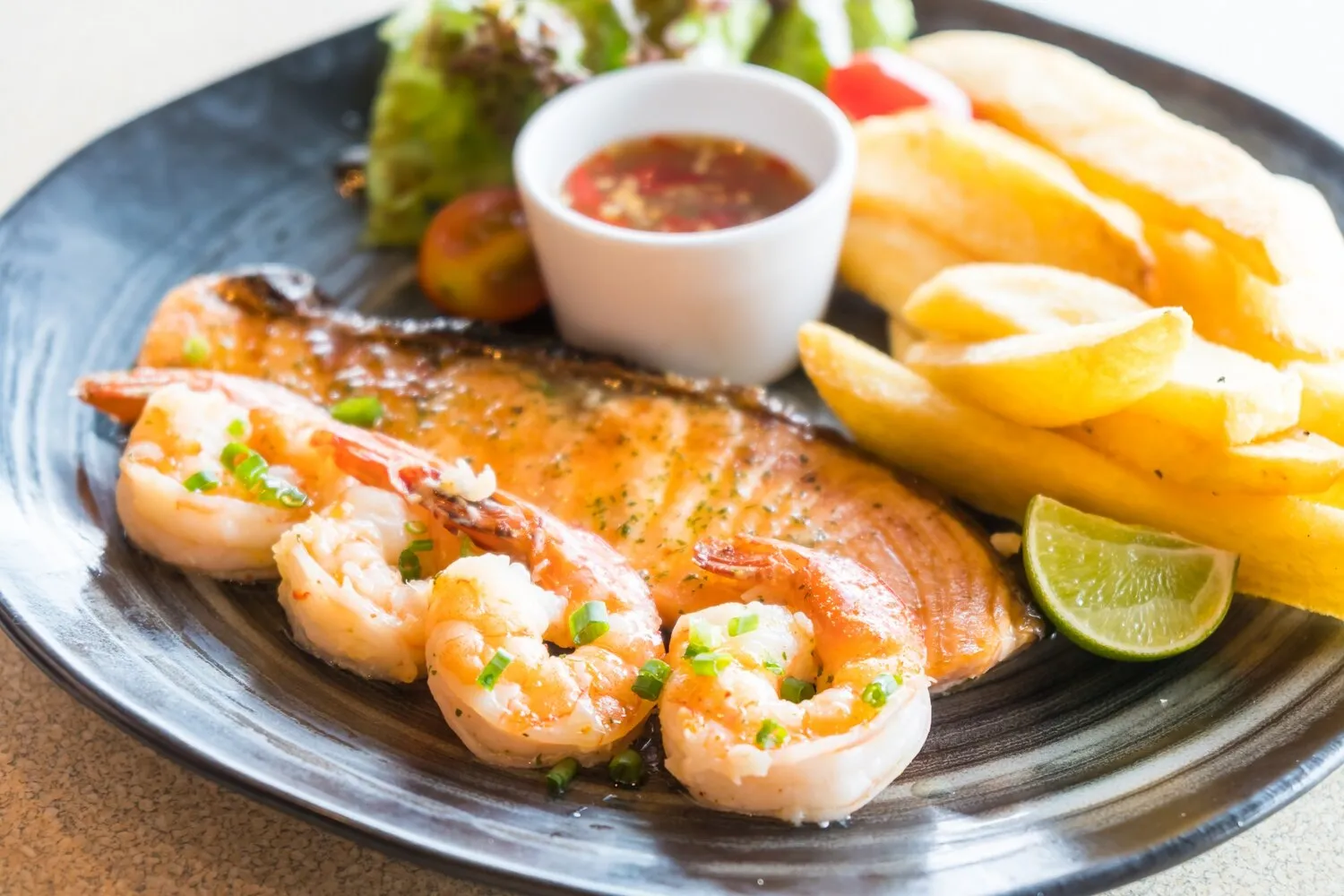
Goi Cuon (Spring Rolls)
Fresh spring rolls with vermicelli noodles, shrimp, pork, lettuce, and herbs, served with peanut sauce.
Nutrition Facts
* The % Daily Value (DV) tells you how much a nutrient in a serving of food contributes to a daily diet. 2,000 calories a day is used for general nutrition advice.
Luc L.Ac. Vietnamese Kitchen
The exact origins of Goi Cuon are debated, but they likely evolved from other fresh spring roll traditions in Southeast Asia, influenced by Chinese cuisine through rice paper usage and regional Vietnamese culinary practices. The focus on fresh ingredients and light preparation reflects the climate and agricultural abundance of Vietnam.
Goi Cuon holds a significant place in Vietnamese cuisine and culture, representing freshness, balance, and communal eating. It's often enjoyed as a light lunch, appetizer, or snack, and is a common dish served at family gatherings and celebrations.
Family and Sharing
Goi Cuon is frequently made and enjoyed together as a family activity. The preparation involves assembling the rolls together, fostering a sense of community and shared effort. Serving the dish encourages conversation and communal dining.
Symbol of Freshness
The use of fresh, raw vegetables and lightly cooked proteins emphasizes the importance of freshness in Vietnamese cuisine. It reflects the agricultural abundance of the region and a focus on healthy eating habits.
Adaptability
Goi Cuon is a versatile dish that can be adapted to different preferences and dietary needs. Variations may include different types of protein (e.g., tofu, chicken), vegetables, and dipping sauces. This adaptability makes it a popular choice for diverse palates.
Goi Cuon offers a refreshing and balanced flavor profile characterized by fresh herbs, delicate vermicelli noodles, succulent shrimp and pork, and a satisfying dipping sauce. It's a harmonious blend of textures and tastes.
The distinct flavors come from: Rice Paper (bánh tráng), providing a slightly chewy, neutral base; Vermicelli Noodles (bún), offering a soft, starchy counterpoint; Shrimp (tôm) and Pork (thịt heo), lending savory and slightly sweet notes; Fresh Herbs (rau thơm) like mint, cilantro, and basil, contributing aromatic and refreshing elements; Lettuce (xà lách), adding crispness; and a dipping sauce – often either a peanut sauce (tương đậu phộng) that is rich and nutty, or a lighter fish sauce based dipping sauce (nước chấm) with a balance of sweet, sour, salty, and spicy flavors. The subtle combination of these ingredients creates a dish that is both light and satisfying.
Rice Paper Hydration
Soak the rice paper briefly in warm water until pliable but not too soft. Over-soaked rice paper will become sticky and difficult to handle, while under-soaked rice paper will be brittle and prone to tearing.
Ingredient Placement
Arrange the ingredients neatly in the lower third of the rice paper, leaving enough space to roll tightly. Placing the shrimp with the visible side down will showcase its attractive appearance when rolled.
Rolling Technique
Fold the sides of the rice paper inwards, then tightly roll from the bottom up, pressing firmly to create a compact and secure roll. Avoid overfilling the roll to prevent it from bursting.
Dipping Sauce Perfection
Experiment with different dipping sauce recipes to find your preferred flavor profile. Peanut sauce can be adjusted for sweetness and thickness, while fish sauce based sauces can be customized with chili, lime juice, and sugar to create a balance of flavors.
Explore additional Fresh dishes and restaurants
Explore FreshDiscover top dining spots and culinary experiences in Portland.
Explore PortlandLearn more about the food culture, restaurant scene, and culinary heritage of United States.
Explore United States